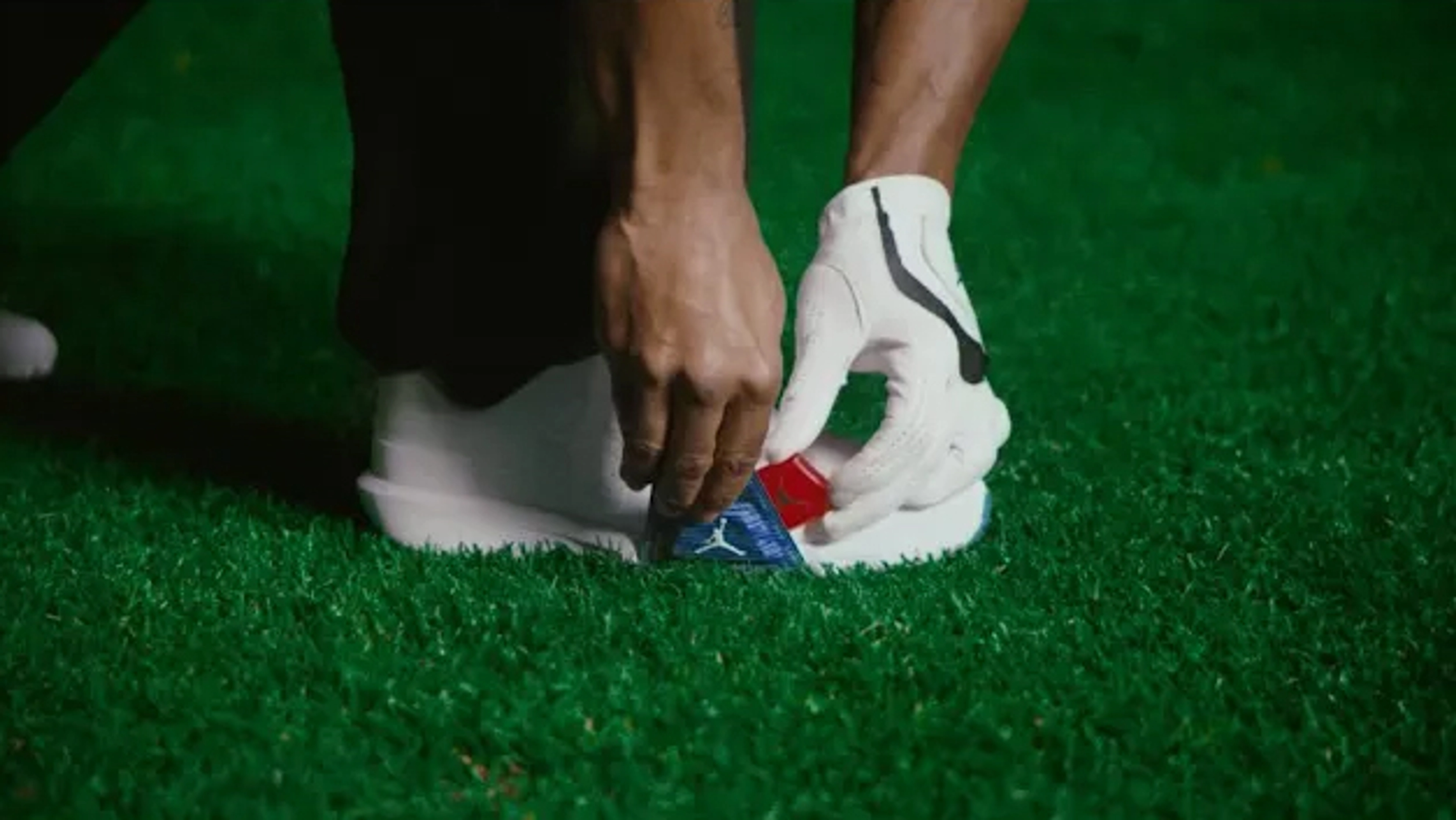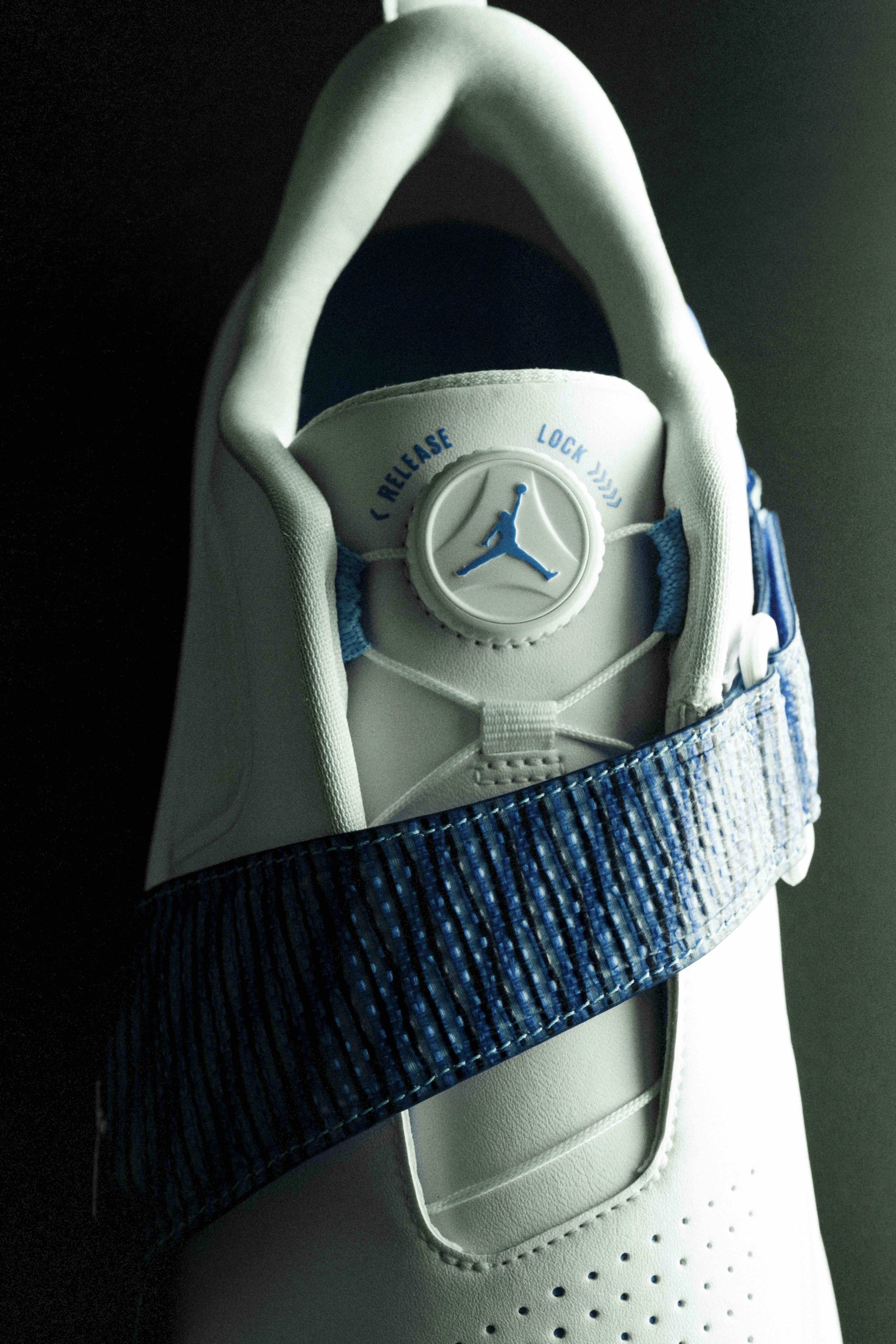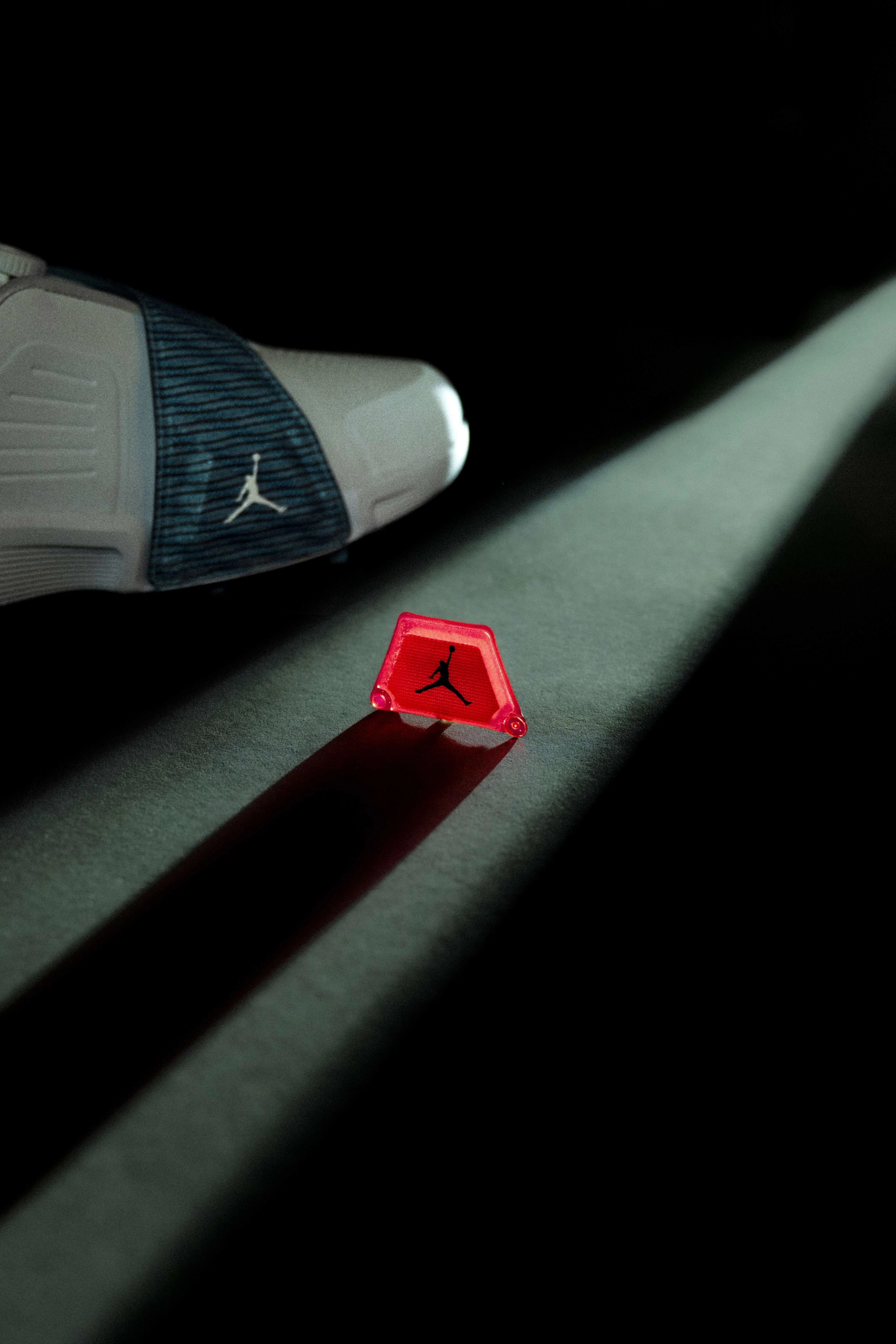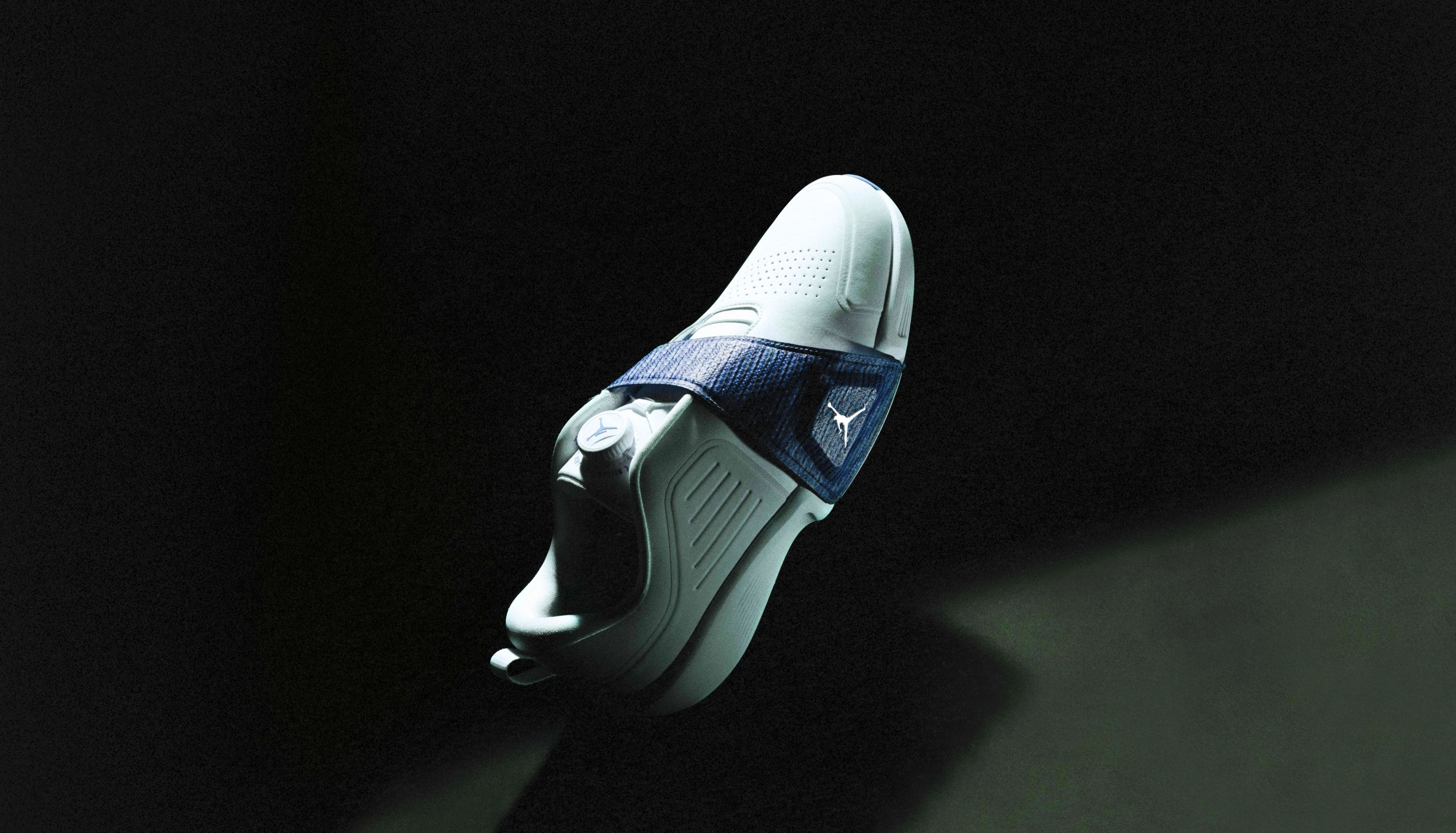Why the Jordan Air Rev Could Change More Than Golf
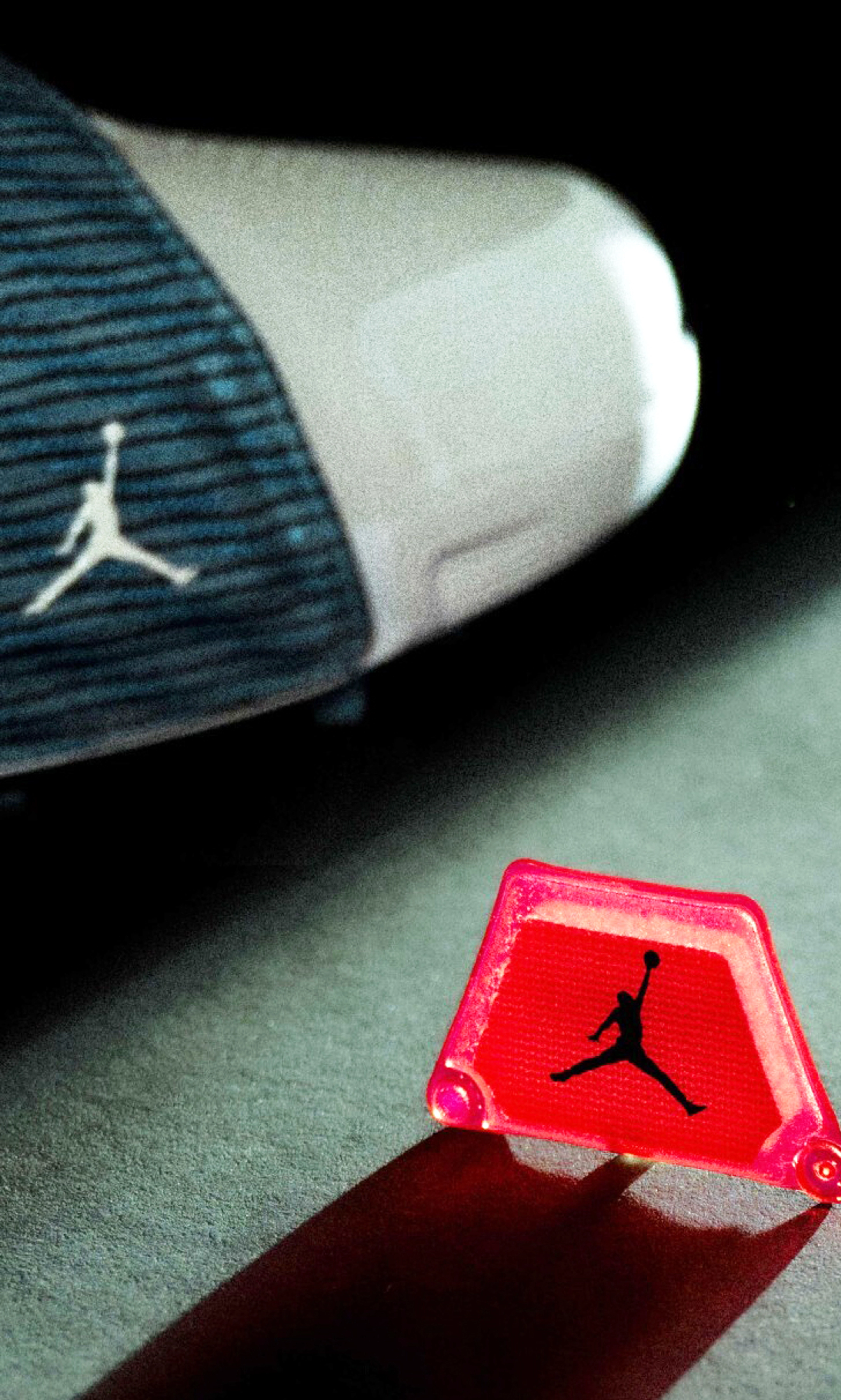
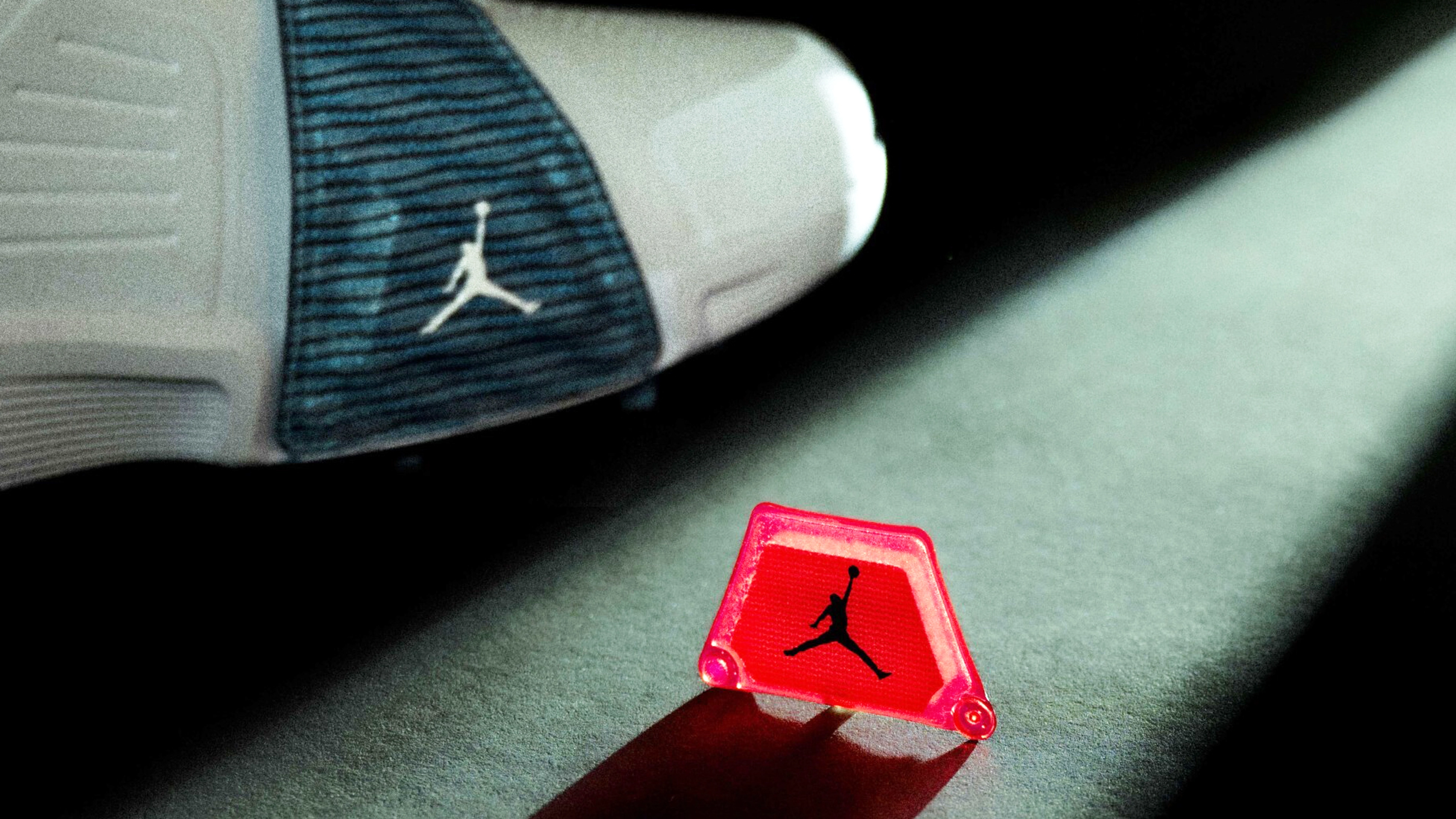
- June 11, 2025
Around 2017, the brief arrived for a new golf shoe for Jordan Brand, straight from MJ: the Air Rev. He wanted an innovative, research-backed golf spike to give even the most powerful golfers an edge, helping them drive the ball further.
“MJ is adamant on creating the most performance-oriented golf product in the industry,” says Matt Plumb, NIKE, Inc. Men's Sport Footwear Director. “He wanted to create a footwear system that could help players generate more rotational power. Whatever margin we could find, it was our job to find it. He knew we had the tools, the expertise, and the curiosity to find new solutions through footwear.”
“MJ is adamant on creating the most performance-oriented golf product in the industry”
Matt Plumb, Men's Sport Footwear Director
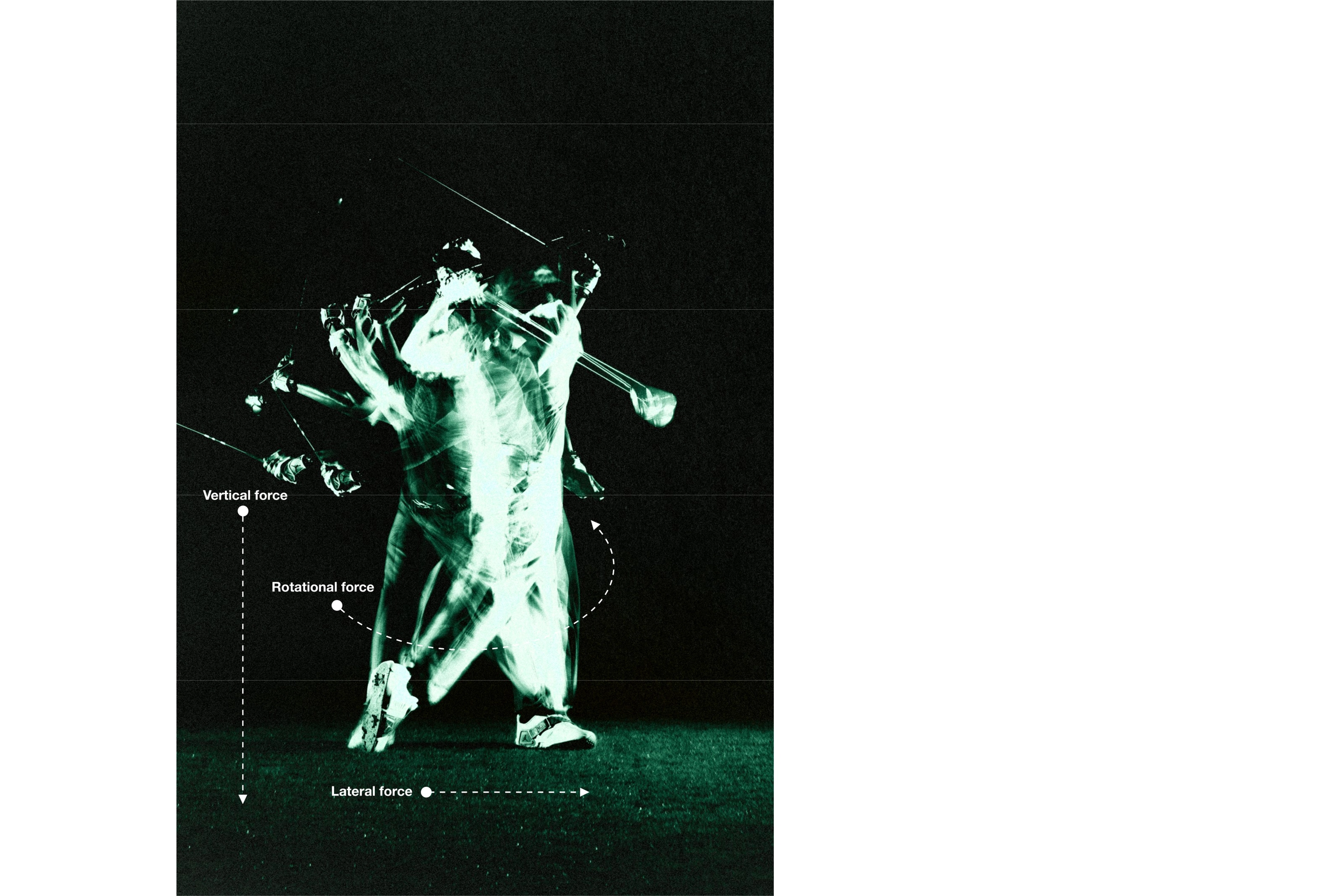
A golf swing works across three planes of movement: vertical (delivering force into the ground upon loading); horizontal (pushing the body from foot to foot); and rotational (generating torque)
Rather than a product of brute force, a sound golf swing more accurately resembles the balletic weight transfer of a tennis serve. The ballistic force on the swing needs to start from the power center, the back foot. But then that power must be finely channeled down through the lead foot, like a row of steel balls swinging through a Newton’s cradle, before rotating into the swing’s follow through. The golfer must remain stable. Wobble even a little, and power is seeped away, taking away precious yards from a drive. And a few yards does matter. Consider that many of the money leaders on the men’s professional tour also rank among the top of the field in driving distance.
“Rotational movement made us think about the responsiveness of Air in a different way"
Yoon Choi, Lead Designer, Jordan Air Rev
In a swing, the back foot and lead foot are solo acts, but complementary. One is a gas pedal. The other acts as an E-Brake. So, what if removable cushioning systems could be applied to the sides of the shoe, based on whether the golfer was right or left footed? The means for experimenting could be found in NIKE, Inc.’s wide portfolio of cushioning technologies, including Zoom Air and foams.
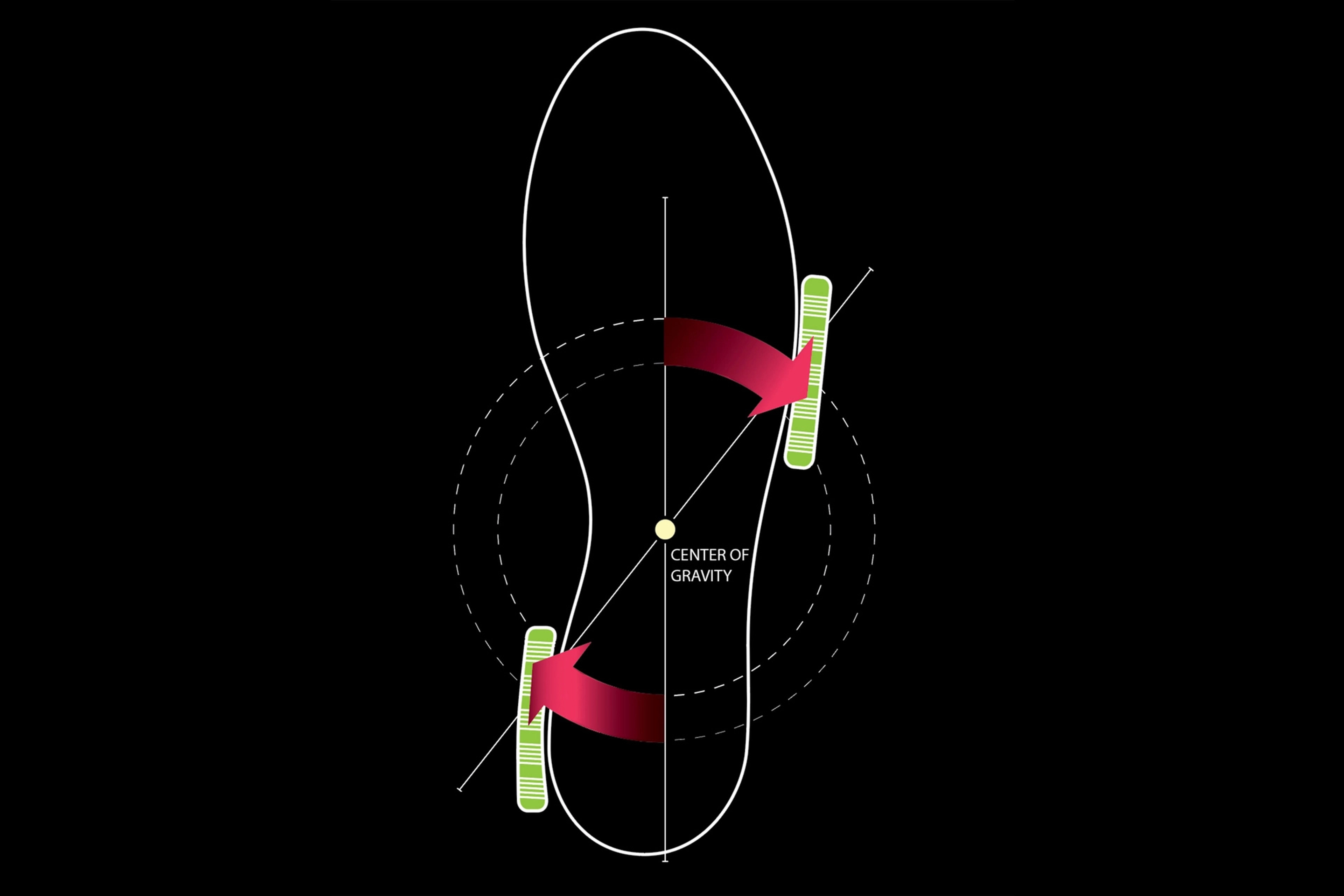
Studying the Foot's Movement
“Traditionally, we’ve combined Zoom Air and our performance foams for vertical force and horizontal. Think jumping up for a rebound in basketball, or bounding across the track,” says Yoon Choi, Lead Designer of the Jordan Air Rev. “But rotational movement made us think about the responsiveness of Air in a different way: Giving that starter-block effect off the back foot for rotational movement. Then, we could use a firmer foam on the lead foot to help brake the body and maintain balance.”
Up to interrogate the idea was Nike NXT’s “Space Kitchen,” an experimental team of engineers, scientists and mathematicians whose jobs are to explore the furthest reaches of sport performance design. The team flew to Florida to visit Grove XXIII Golf Course, MJ’s private course. There, they worked alongside Darren May, Grove XXIII’s head golf coach, and were given free rein to test the potential for footwear that could help enhance rotational velocity. Specifically, they had to understand just how much lateral force a golfer could stand to gain, were the feet assisted by a kind of propulsive sidewall. But there wasn’t a convenient tool that could measure the rotational power a golfer develops as they pivot during a swing.
Translating the Benefit
Never before has a Nike shoe implemented Zoom Air laterally to help an athlete generate rotational power. A responsive sidewall, logic said, could act like a brace against which the back foot could plant. Depending on where the research led, the insights could be applied to shoes in other sports based in rotational movement. A baseball hitter loading up and swinging for the fences. A discuss thrower heaving her lead leg out of the spin and launching for distance. The hypothesis was exciting in theory, but it was just that: a theory.
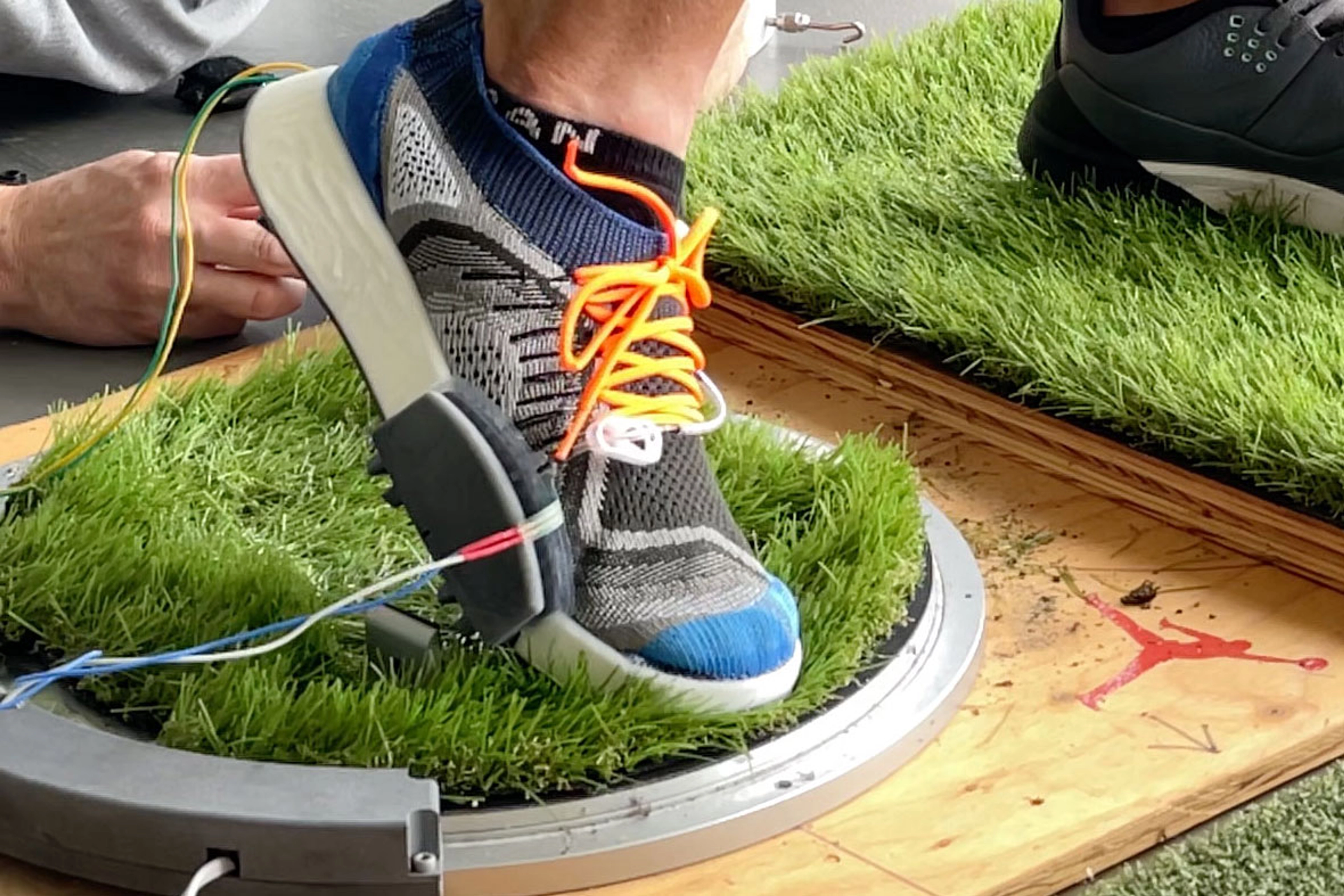
The custom force gauge created by the NXT "Space Kitchen" to help measure rotational power.
True to form, the NXT team improvised, creating a turntable gauge to spin from a radial point. They backed the trail foot against a spring-loaded sidewall where the lateral forefoot and the back quarter panel were both secured. As a golfer swung, they’d drive off their back foot, registering the force via a gauge fixed to the ankle.
The team invited a roster of pros to the Grove to test their driving power. Over the course of their sessions, NXT researchers dialed up or down the assisted force from the plate’s spring, mimicking the PSI (a unit of pressure) responsiveness of a Zoom Air unit.
Over months of testing, the data was promising. Golfers were describing how they felt more secure and more powerful — two qualities at their best when they're harmonized — with the help of the spring-loaded turntable. But how much artificial energy return was enough while giving that same yardage benefit? And could Zoom Air do the job?
The team began stripping away, one by one, the spring-loaded components of the turntable and replacing them with Zoom units adhered to the lateral sidewall. Around the same time, the NXT Kitchen began creating a range of shoe prototypes that experimented with laterally placed Zoom Air. Some of the results were borderline unbelievable. One of them, modified from a Jordan ADG 3 Golf, had two Zoom units bolted onto the shoe and was overlayed with fang-like traction spikes.
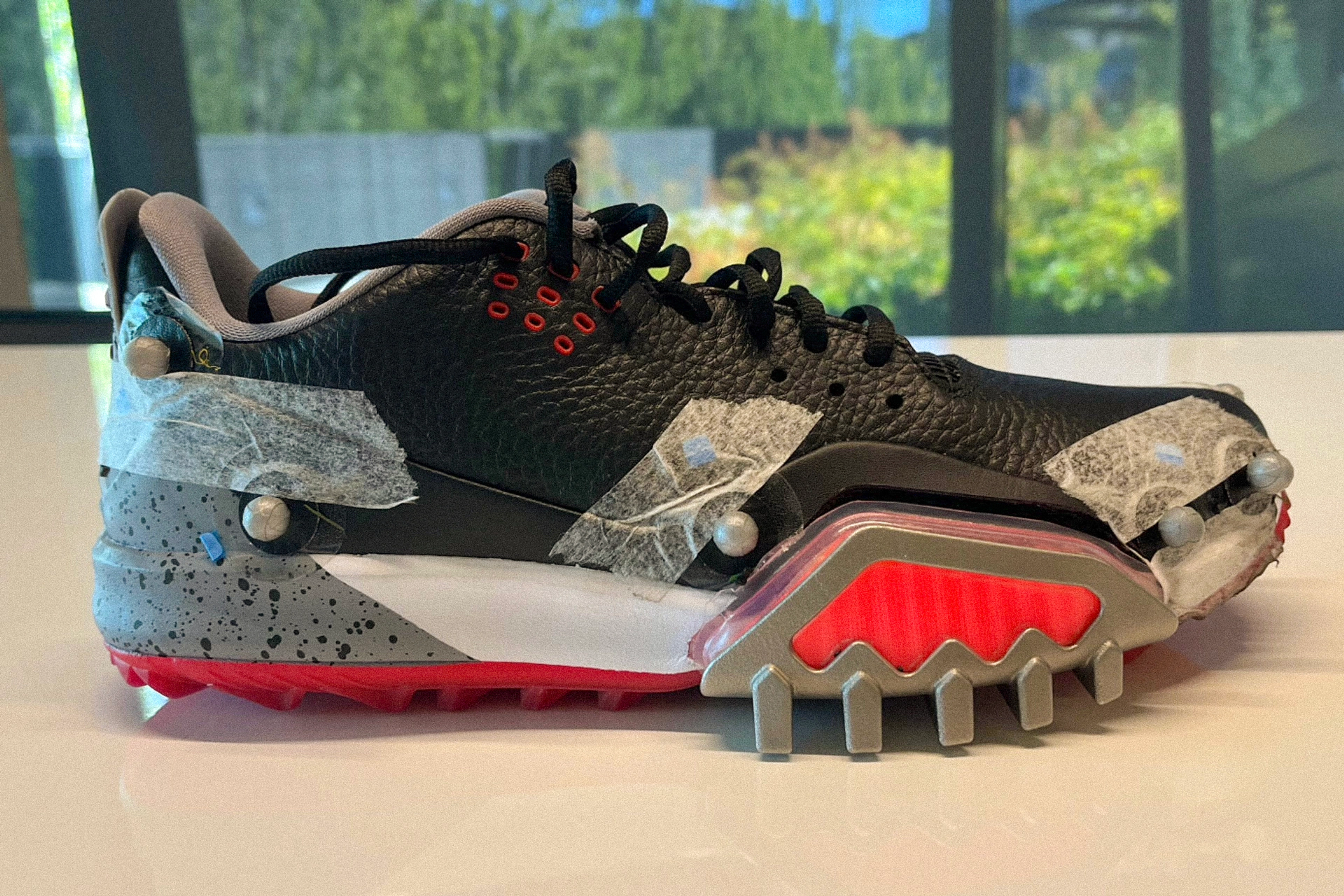
In practice, prototypes like this achieved the same performance ends as the turntable. But playability was a different matter (Testing was actually paused on this concept out of a risk for injury).
The outlandishness of the prototypes got at a tension that was shared by the project’s researchers, developers and designers, who would inevitably need to translate the biomechanical research into a tangible project, and finally a real shoe, trusted by golfers over an 18-hole course.
“We all knew the system was working. We knew that Zoom Air could be applied in this way to great results,” says Choi. “But could this be wearable? Or would this ultimately be a science project?”
Choi and a team of developers tried funneling the research into a few more prototype concepts, and one direction stood out: a removeable strap, adhered to those rotational sweet spots across the midfoot, that could slot in and out removeable Zoom Air units depending on the foot preference of the golfer.
The shoe’s concept was finally beginning to appear. Prototypes revealed what looked to be a functioning performance shoe. The Flight Lock containment system was born, which included the lateral cushioning, the midfoot strap, and a tightening dial on the tongue.
The doubts would return to Choi every so often: Perhaps the shoe was gimmicky. Maybe this interpretation of lateral containment wasn’t realistic, because its benefits weren’t easily believable.
“Every time we started to question what we were doing, we’d hear more feedback validating how players felt stronger in driving the ball further, and they'd add that the Flight Lock system was comfortable, not a distraction” says Choi. “For a lot of us, this project represents exactly what Bowerman was doing decades ago with his track spikes: explore a performance benefit, no matter how small, and ruthlessly experiment how to achieve it.”
The willingness to seek out every last margin of competitive advantage was core to Bowerman's approach. Fittingly, the mindset is shared by MJ himself. When he welcomed Jordan Brand and Nike NXT teams to Florida for the initial briefings, he emphasized how the Grove was a place to let loose with their research.
“MJ told our team from the beginning, ‘You’re always welcome to come here. Test out anything you need,'" says Plumb. “He’s always encouraged us to break ground on new standards for what we think is possible."
“MJ told our team from the beginning, ‘You’re always welcome to come here. Test out anything you need,'" says Plumb. “He’s always encouraged us to break ground on new standards for what we think is possible."
